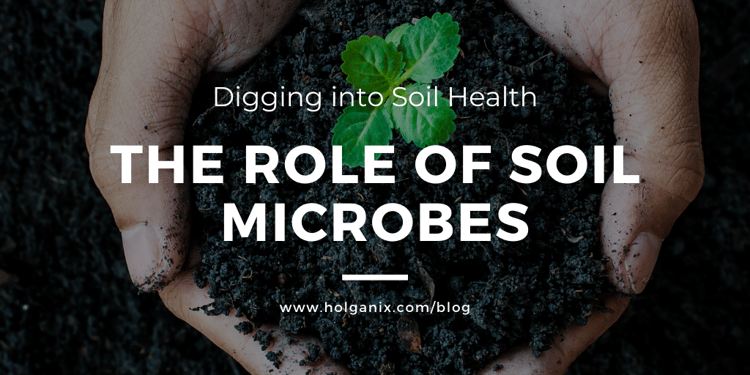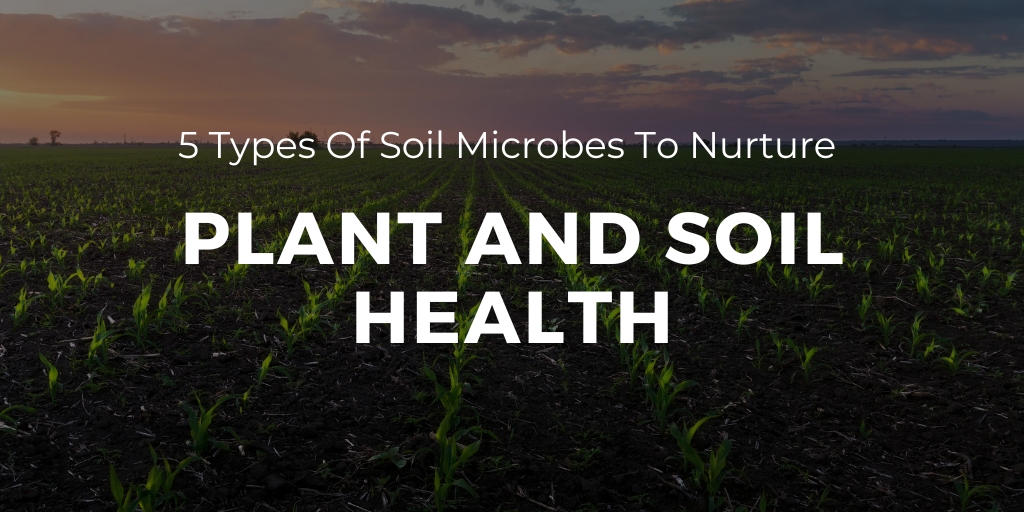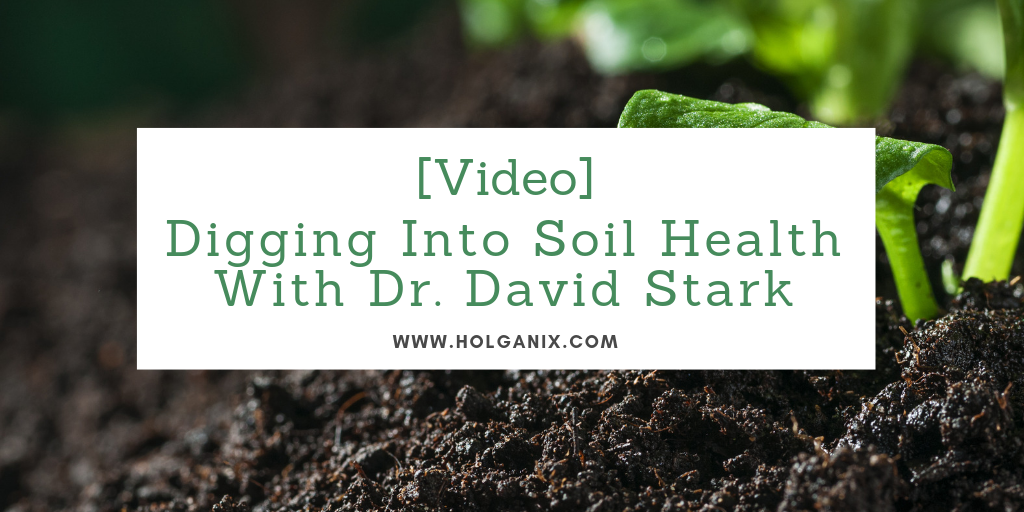
It’s no secret that soil health is important. And for those looking to maximize the health of your soil, leveraging soil microbes to improve soil health and yield is the key. Healthy soils can affect a number of results from crop yield, to disease suppression, nutrient availability and more.
In this video, Holganix President of Agriculture, Dave Stark Ph.D. and Holganix CEO & Founder, Barrett Ersek will discuss:
- Best practices for building soil health
- The role of soil microbes in soil health, crop performance and nutrient efficiency
- How soil health can lead to improved profit per acre for the farm
- Insights and data from university studies and Holganix studies on incorporating soil health practices
Watch our video blog below or skip the video and scroll to read! If you are reading this blog via email, click here to access the video.
How is Healthy Soil Built?
Healthy soil is built primarily through the interaction of roots and microbes. The organic matter that we leave on top of the ground - whether that’s debris from last year’s crop, grass clippings, biochar, humic acids – all of that contributes to healthy soil, but the data shows it is primarily through roots and microbes that we drive soil health.
Consider the synergistic relationship between the plant and microbes. In a single teaspoon of soil, there are thousands of different species of microbes and over a billion individual microbes. The plant invests its energy into secreting food to the root zone to feed microbes. In turn, the microbes function as the stomach for the plant – making nutrients available for the plant to consume.
So, what are soil microbes? Soil microbes consist of bacteria, actinomycetes, fungi, algae, protozoa, and nematodes. All these microbes are important for building soil health.
For example, bacteria break down organic matter, induce plant rooting, convert nutrients and fight other microbes. Fungi are voracious degraders, they recycle nutrients back to the plant, and eat other microbes. Some of the larger microbes, like protozoa and nematodes, live near the root zone and consume other microbes.
When microbes are in balance, they function like a fine-tuned engine to support the plant, increase yield and build soil health. But when the microbes are out of balance, that engine doesn’t work as well and at times can work against the plant. For example, fallow syndrome, fairy ring, and other illnesses are due to imbalances within the soil.
Improving Microbial Presence in Soil
Mother nature and some agronomic practices harm the microbes. For example, tilling is especially hard on fungi populations, and crop protection products and even the over-application of fertilizer can all play a role in harming microbes. Mother Nature also plays a role, in killing beneficial microbes during flooding and freezing.
Adding a diverse supply of microbes to the soil keeps the soil working!
Using Microbials To Improve Soil Health
Holganix Bio 800+ Agriculture charges soil with over 800 species of soil microbes to improve plant performance. What does that mean for you?
That means you build soil and root health, reaping the benefits of better soil structure in whatever soil type you have. This translates to improved yield on crops, better playability on golf courses, and a reduced need for fertilizers and pesticides on lawns.
Learn more about the science behind Holganix Bio 800+ Agriculture below.

 |
December 11, 2020
|
6:18 PM
|
December 11, 2020
|
6:18 PM
-2.jpg)
-1.jpg)
-1.jpg)
-1.jpg)
.jpg)

-2.jpg)
-1.jpg)
-1.jpg)
-1.jpg)
.jpg)






.webp)
-1%20(1).webp)
-831535-2.webp)



.png)

